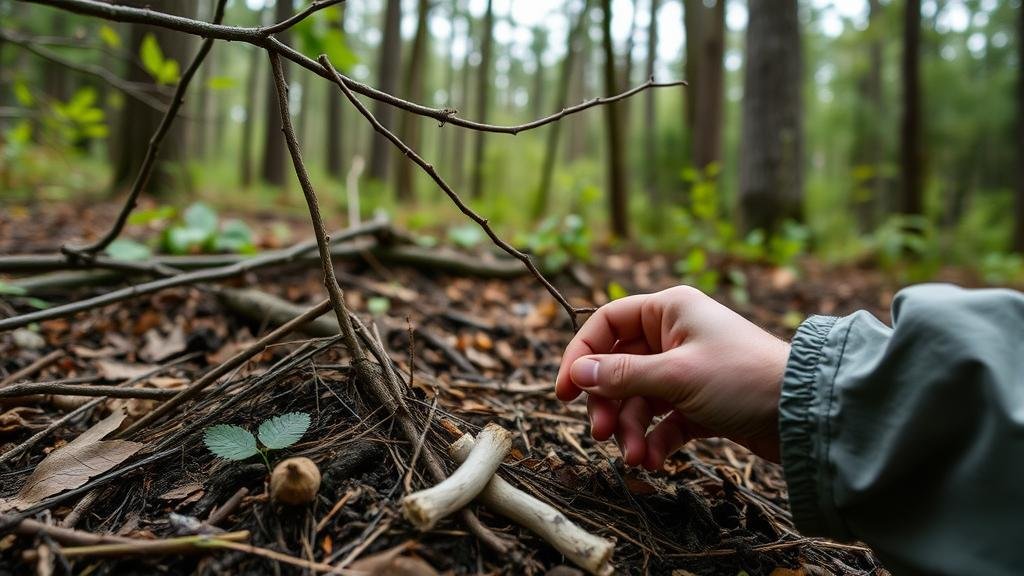Unearthing Bone Needles and Ornaments in Seasonal Forest Camps
Unearthing Bone Needles and Ornaments in Seasonal Forest Camps
The discovery of bone needles and ornamental artifacts in seasonal forest camps provides invaluable insights into the daily lives and cultural practices of ancient human populations. These items reveal not only the functional aspects of prehistoric technology but also the social and aesthetic values of the communities that crafted them. This article delves into the significance of these findings, explores various case studies, and highlights the methodologies employed in archaeological investigations.
The Significance of Bone Needles
Bone needles, often made from the long bones of animals, were essential tools in ancient societies, serving primarily in textile production and the construction of garments. craftsmanship involved in manufacturing these needles highlights the advanced skills and resourcefulness of prehistoric communities.
- Bone needles can vary in size and design, with some featuring intricately carved decorations that illustrate the maker’s artistry.
- For example, a study of bone needles found at the Mesolithic site of Star Carr in the UK revealed that they were likely used for sewing leather and hide, indicating a sophisticated understanding of materials and techniques.
The prevalence of such artifacts in seasonal forest camps illustrates the adaptability of these populations to their environments. The ability to create and utilize tools for clothing and shelter allowed these communities to thrive in various climates, showcasing their knowledge of local fauna and flora.
Cultural Significance of Ornaments
Bone ornaments, which include pendants, beads, and decorative items, provide critical insights into the symbolic and social dimensions of prehistoric life. These artifacts often reflect the values, beliefs, and identity of the groups that created them.
- For example, the presence of ornately carved bone pendants at the site of Ötzi the Iceman suggests that personal adornment played a role in social status or cultural expression among Neolithic communities in the Alps.
- Similarly, ornaments found in North American indigenous camps often feature designs that signify clan identity or spiritual beliefs, emphasizing the intertwining of art and cultural significance.
The study of these ornaments helps archaeologists piece together social structures and their evolution over time. By analyzing the motifs and crafting techniques used in these artifacts, researchers can infer connections between different groups and their interactions.
Excavating seasonal forest camps requires specialized methodologies to ensure the preservation of delicate artifacts like bone needles and ornaments. Archaeologists employ various techniques, including stratigraphic excavation, which involves careful layering to understand the chronological order of findings.
- For example, the systematic grid system is used in sites such as the prehistoric camp at the Gault Site in Texas, where each artifacts depth and location provide context for understanding human activities over thousands of years.
- Also, the application of radiocarbon dating and isotope analysis helps establish timelines and dietary practices linked to the inhabitants of these camps.
Also, interdisciplinary approaches that incorporate anthropology, chemistry, and environmental science play a crucial role in the interpretation of findings. This collaboration enriches the understanding of how ancient peoples interacted with their ecosystems.
Real-World Applications and Future Research
Findings of bone needles and ornaments offer more than historical insight; they also serve contemporary applications in anthropology and art. For example, knowledge gained from studying ancient crafting techniques can inspire modern artisans and inform sustainable practices in textile production.
The implications of this research extend beyond the academic realm; educational programs based on archaeological findings can engage the public and foster a deeper appreciation for human history and cultural heritage. Schools and museums often integrate these topics into their curricula to promote understanding of our ancestors’ lives.
Ongoing research in this field is essential to continue unearthing the stories embedded within these artifacts. Future excavations at previously investigated sites, as well as the exploration of new areas, will likely yield further discoveries that illuminate the complexities of ancient human life.
Conclusion
The unearthing of bone needles and ornaments in seasonal forest camps underscores the intricacies of prehistoric societies. e artifacts not only highlight the inventiveness of ancient peoples but also their cultural values and social structures. Continued archaeological efforts, combined with modern analytical techniques, promise to expand our understanding of these crucial facets of human history. Communities, both past and present, are connected through the threads of technology and culture, weaving a rich narrative that continues to evolve.



